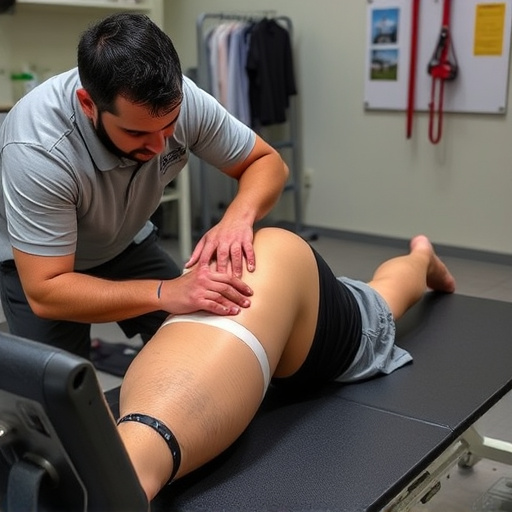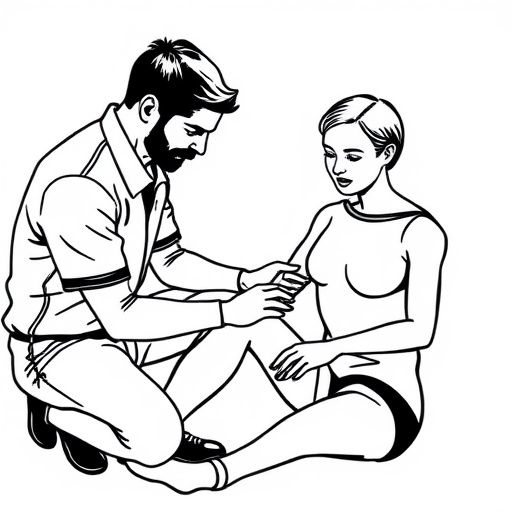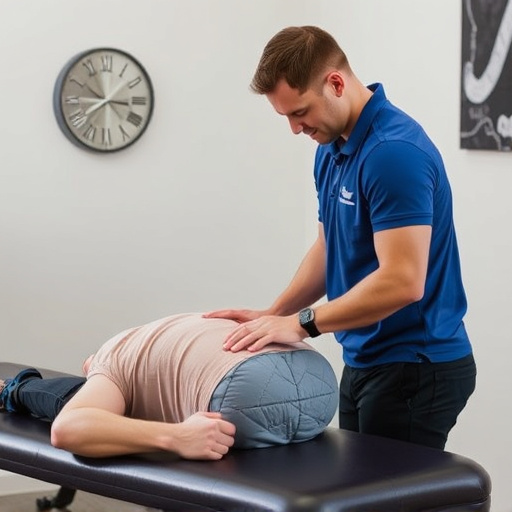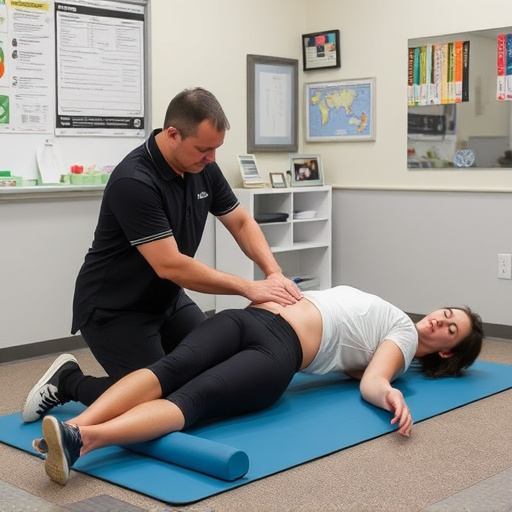Ergonomic injuries, common in sedentary jobs, cause discomfort and chronic pain. Chiropractic treatment offers a personalized approach to manage these issues by addressing imbalances and improving posture, alleviating symptoms and preventing further damage. Incorporating simple exercises into daily routines enhances healing and strength, minimizing future injuries. Preventing ergonomic injuries involves adopting ergonomic principles, regular stretching breaks, shockwave therapy, and tailored exercise routines for proactive wellness.
Ergonomic injuries, often caused by repetitive motions or poor work posture, can significantly impact daily life and productivity. This article guides you through a comprehensive approach to ergonomic injury treatment, focusing on simple exercises as a powerful tool for recovery. We explore effective strategies to incorporate into your routine, ensuring faster healing and enhanced well-being. Additionally, discover long-term solutions to prevent future injuries, empowering you to maintain an active and healthy lifestyle while mitigating ergonomic risks.
- Understanding Ergonomic Injury and Its Impact
- Incorporating Simple Exercises for Effective Recovery
- Long-Term Strategies for Preventing Future Ergonomic Injuries
Understanding Ergonomic Injury and Its Impact

Ergonomic injuries are a common issue faced by many individuals who spend long hours sitting at desks or performing repetitive tasks. These injuries often result from poor posture, incorrect workstation setup, or excessive strain on specific muscles and joints. Understanding the impact of ergonomic injuries is crucial to implementing effective treatment strategies. Such injuries can lead to severe discomfort, reduced mobility, and even chronic pain if left unaddressed.
Back pain relief is a primary concern for many patients suffering from ergonomic-related issues. Chiropractic treatment, known for its gentle adjustments and personalized treatment plans, has proven to be beneficial in managing these conditions. By focusing on correcting musculoskeletal imbalances and improving overall posture, chiropractic care aims to alleviate symptoms and prevent further damage, ensuring individuals can return to their daily routines with enhanced comfort and efficiency.
Incorporating Simple Exercises for Effective Recovery

Incorporating simple exercises into your routine is a powerful tool for effective ergonomic injury treatment and overall recovery. These easy-to-follow activities are designed to promote healing, improve mobility, and enhance strength, all while reducing the risk of future injuries. By integrating functional rehabilitation techniques tailored to post-injury care, individuals can experience significant improvements in neck pain relief and overall well-being.
When engaging in these exercises, it’s crucial to start slowly and listen to your body. Consistent yet gentle practice helps restore the body’s natural alignment and flexibility, addressing the root causes of many ergonomic injuries. Remember, simple is often more effective when it comes to post-injury care, as it ensures compliance without adding unnecessary strain or frustration.
Long-Term Strategies for Preventing Future Ergonomic Injuries

Preventing ergonomic injuries is a proactive approach that goes hand in hand with effective ergonomic injury treatment. While immediate care addresses acute issues, long-term strategies focus on sustained wellness and injury avoidance. A key component involves adopting ergonomic principles in daily routines, such as maintaining neutral postures while sitting, standing, or lifting objects. Regular breaks and stretching exercises can significantly reduce muscle tension and fatigue, thereby minimizing the risk of chronic pain relief.
Additionally, incorporating non-invasive treatments like shockwave therapy offers another layer of protection. This cutting-edge approach has proven effective in managing various musculoskeletal conditions without the need for extensive surgery or prolonged recovery periods. By combining these preventive measures with proper exercise routines tailored to individual needs, individuals can proactively manage and reduce their chances of experiencing future ergonomic injuries.
Ergonomic injury treatment involves a multi-faceted approach, combining simple exercises with long-term prevention strategies. By incorporating these exercises into daily routines, individuals can effectively support their recovery and reduce the risk of future injuries. Remember that consistency is key; regular practice of these techniques can lead to significant improvements in posture, flexibility, and overall well-being. In navigating the path to better ergonomics, these simple yet powerful tools empower folks to take control of their health and foster a more comfortable, productive lifestyle.














